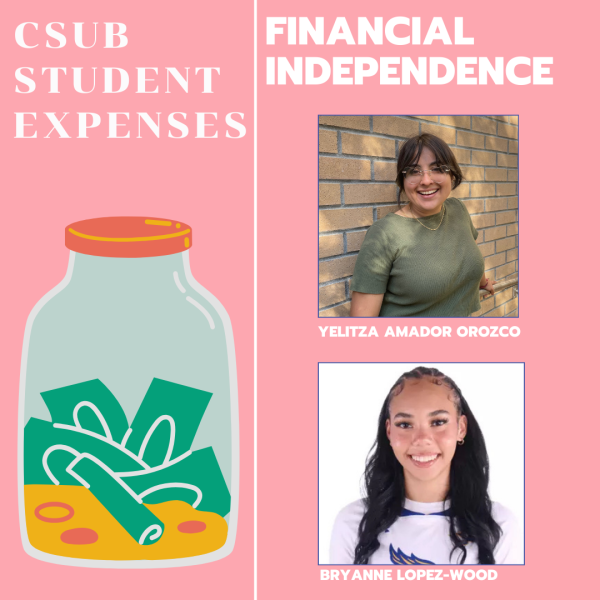
With the recent six percent tuition increase, Cal State Bakersfield’s undergrad tuition has gone from $3,040 to $4,045 since 2022.
A reality for the majority of college students is facing financial hardships—college students rely on financial aid or family to support them through college. However, tuition isn’t the only cost of school when you have extra expenses such as books, $93 parking passes, printing and food to name a few. So how do students feel about having to pay the rise in tuition while still having to pay extra fees?
Freshman, Bryanne Lopez-Wood is an 18-year-old student athlete, she is considered a stereotypical “broke college student,” having to rely on her single mother for financial support.
With the expenses of having to buy “required” books, the financial transition from high school to college felt drastic. She found herself asking “Mom, can you please send me the money, I need it?” Then feeling bad because the “required” book was not utilized by the professor.
“I had to pay $170 for a book which we don’t even use at all, so it was just a waste of money,” said Lopez-Wood.
The reality, for a majority of college students, is that they are relying on family support while being in the process of becoming more independent.
Not all college students struggle financially in the same way. While some do have financial support, on or off campus jobs, or receive financial aid, everyone’s story is different.
“I’m lucky that my family helps me out money wise so I don’t really have to worry, but I know there’s some people who don’t have that support, and I wish I didn’t have to rely on my family so much, but I guess in that aspect I got pretty lucky,” said Caroline Contreras, CSUB student worker as she felt compassion for the students who don’t get financial support from their family.
Another experience that often times leads to financial hardships is being a first-generation college student. For first generation students, they are the first ones in their families to have to navigate college and figure out how to apply for financial aid, grants, or scholarships. First generation students may also make the decision of what school to attend based on affordability and location.
Yelitza Amador Orozco, 22-year-old student worker, feels that the tuition increases and extra expenses are “unacceptable.” A drawling factor to CSUB was the fact that it was an affordable university.
Therefore, when they first saw the tuition increase reflect in their My CSUB account, they were taken aback and thought that it was because of the number of classes that they were enrolled in. After comparing their tuition to a coworker who was taking less courses, they saw that the tuition was the same, and thought it was just unacceptable.
“It’s an extra thousand, but I don’t know where the extra thousand is going. I don’t really see a difference in my education if I’m being honest,” said Orozco.
If the rise in tuition is coming back to students, why don’t students see a difference on campus or in their education?
Extra expenses aren’t just affecting students financially, it’s also affecting their focus. Students can no longer study without having to worry about their funds because of the extra expenses. Orozco said that some classes require printed copies, leaving students with more mandatory fees.
“Frankly it overwhelms me so much, it makes me really upset because I only get paid monthly, and the fact that I have to budget such a large portion of my already really low paycheck towards tuition and the monthly expenses,” said Orozco.
A significant amount of their students is from neighboring towns and chose CSUB, so they can save up on living expenses but find themselves struggling to pay for the cost of commuting.
CSUB offers a free GET Bus program as a resource but it is only useful if you live in Bakersfield. Most students who are from surrounding cities like Wasco, Shafter, Delano, McFarland and Arvin don’t have the support of transportation programs.
The rise in tuition and the extra expenses students are paying is not a contributing factor to their quality of education. Students are unaware of where their money is going if it is not directly impacting their student needs. The student’s reoccurring question is where their funds are going to if not to their quality of education.








